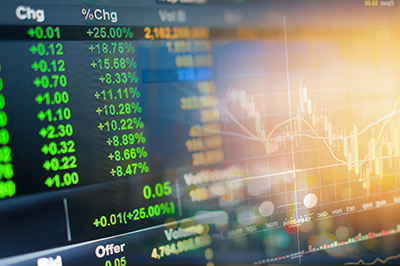Stocks & Shares ISAs – what you need to know
This content is for information purposes only and should not be taken as financial advice. Every effort has been made to ensure the information is correct and up-to-date at the time of writing. For personalised and regulated advice regarding your situation, please consult an independent financial adviser here at Castlegate in Grantham, Lincoln or other local offices.
Interest rates on regular savings accounts are at historic lows. In 2021-22 it is nearly impossible to find an easy access account beating 0.65%, or a fixed-rate one over 1.7% (both under the Bank of England’s 2% target rate of inflation). If you want higher returns and are prepared to take on additional risk, then a Stocks & Shares ISA might be for you.
In this guide, our financial planning team here at Castlegate in Grantham, Lincolnshire explains how these ISAs work in 2021 and where they could sit within a financial and investment plan. We hope you find this content helpful. If you would like to discuss your own financial plan please get in touch to arrange a no-obligation financial consultation, at our expense:
01476 855 585
info@casfin.co.uk
Overview: Stocks & Shares ISAs
Each tax year you can put up to £20,000 into a Stocks & Shares ISA. Any interest, capital gains and dividends generated within it will be free from tax. For instance, suppose you held £100,000 in your ISA and you sell a range of investments – making a 20% profit (i.e., £20,000). Had you done this in a general investment account (GIA), then your £12,300 capital gains tax allowance would have applied – leaving £6,700 liable to tax. However, since it was done within an ISA, the gains can be made tax-free.
You can invest in a wide range of assets within a Stocks & Shares ISA – which vary depending on the provider. These can include:
- Shares. You can buy “slices” (shares or fractional shares) of individual companies via many ISAs. The hope is that these then grow in value and possibly pay you dividends along the way.
- Bonds. This involves loaning your money to companies and/or governments on the understanding that this will be repaid to you by a certain future date, with interest.
- Funds. Rather than buying shares directly you could combine your money with that of other investors and purchase several all at once – via a fund. This helps you to spread out your risk and diversify more quickly.
It is important to remember that past performance is no guarantee of future results. You might not get back what you invested. Choose carefully – ideally with the help of a financial adviser – and be patient over the long term.
Fees & rules
Stocks & Shares ISAs can be found in a wide range of places including stockbrokers, banks, fund management businesses and online investment platforms. However, certain providers are better than others and the fee structures frequently differ.
If you want to buy and sell individual shares, for example, then some providers of Stocks & Shares ISAs charge a dealing commission per trade (e.g. £9.50) when done online, in real time. Others are commission-free. As such, for those looking to buy and sell investments more often it may be better to seek other options. For those looking to invest a larger lump sum – and who are not planning on being very active with their investments – certain providers may be better.
Common Stocks & Shares ISA fees to consider include:
- Annual fees. This is often expressed as a percentage of your invested assets.
- Dealing charges. Applied when you buy or sell funds and shares.
- Fund manager fee. A fee paid to the manager of a particular fund (if you invest in it).
Specific rules are important to consider when opening and managing a Stocks & Shares ISA. You need to be over the age 18 and you can only pay into a single ISA type within a given tax year. For instance, you could put money into a Cash ISA, Lifetime ISA and a Stocks & Shares ISA in 2021-22 but not into two Stocks & Shares ISAs. Finally, bear in mind that any unused allowance from a tax year cannot be carried forwards. For example, if you only use £10,000 in 2021-22 then you cannot add the remaining £10,000 to your £20,000 ISA contribution limit in 2022-23.
ISAs & investment strategy
How should your Stocks & Shares ISA be used within your long-term financial plan? Here, you need to factor in a range of considerations including your financial goals, risk tolerance, tax position and investment horizon. Suppose you have maximised your £40,000 annual allowance for pension contributions but still want to build up more retirement savings. Here, putting more into a Stocks & Shares ISA could be an option for building future wealth tax-efficiently.
However, if you are looking to build up a deposit for a first home purchase in the next few years, then it may make sense to hold most of this in cash. If you put the majority of it into the stock market and there is a crash, then you have little time for your portfolio to recover and grow past the losses. Consider seeking financial advice if you want to ensure that your ISA is used wisely within your wider strategy.
Conclusion & invitation
If you are interested in discussing your own financial plan or protection strategy with us, please get in touch to arrange a no-commitment financial consultation at our expense:
01476 855 585
info@casfin.co.uk












